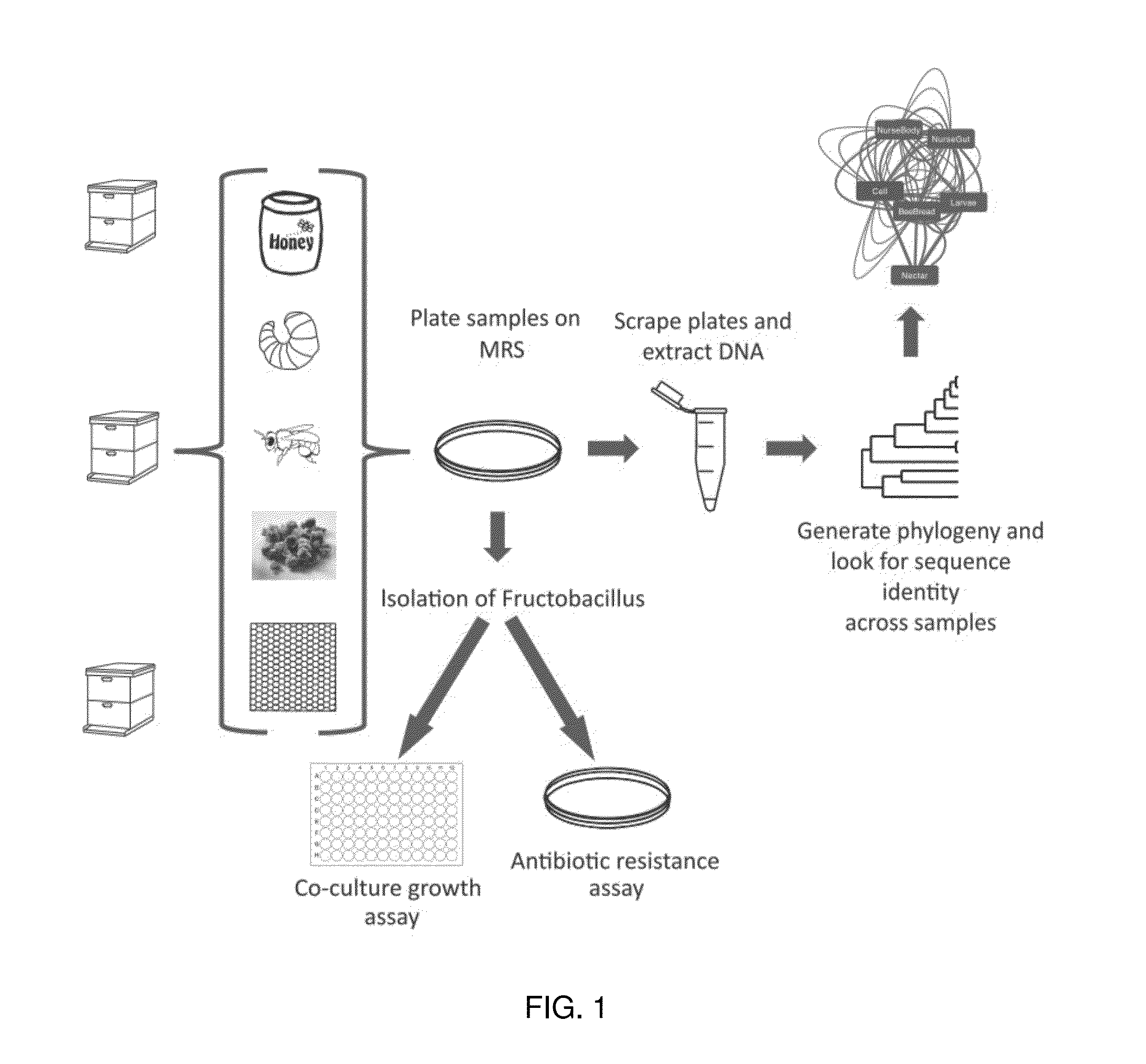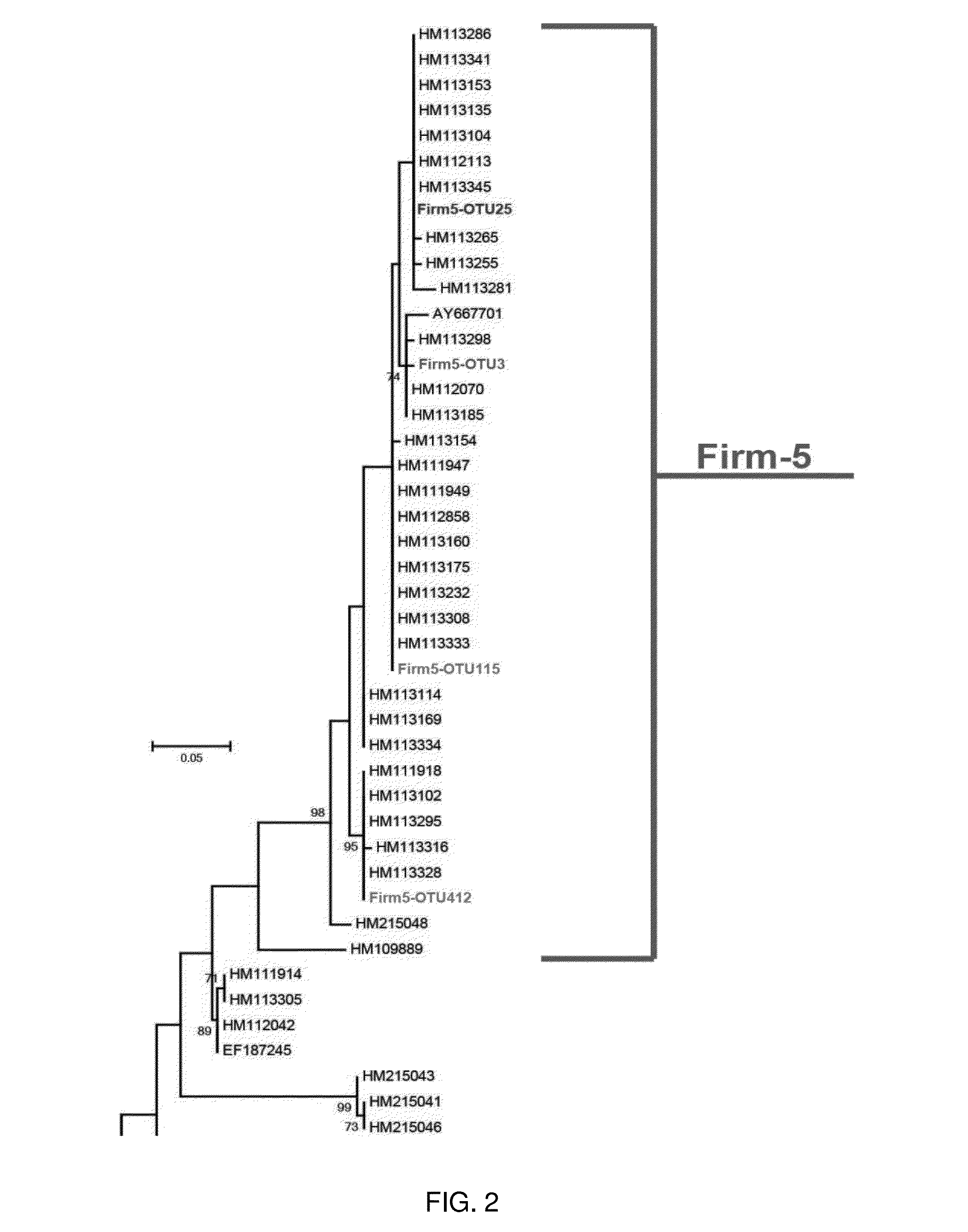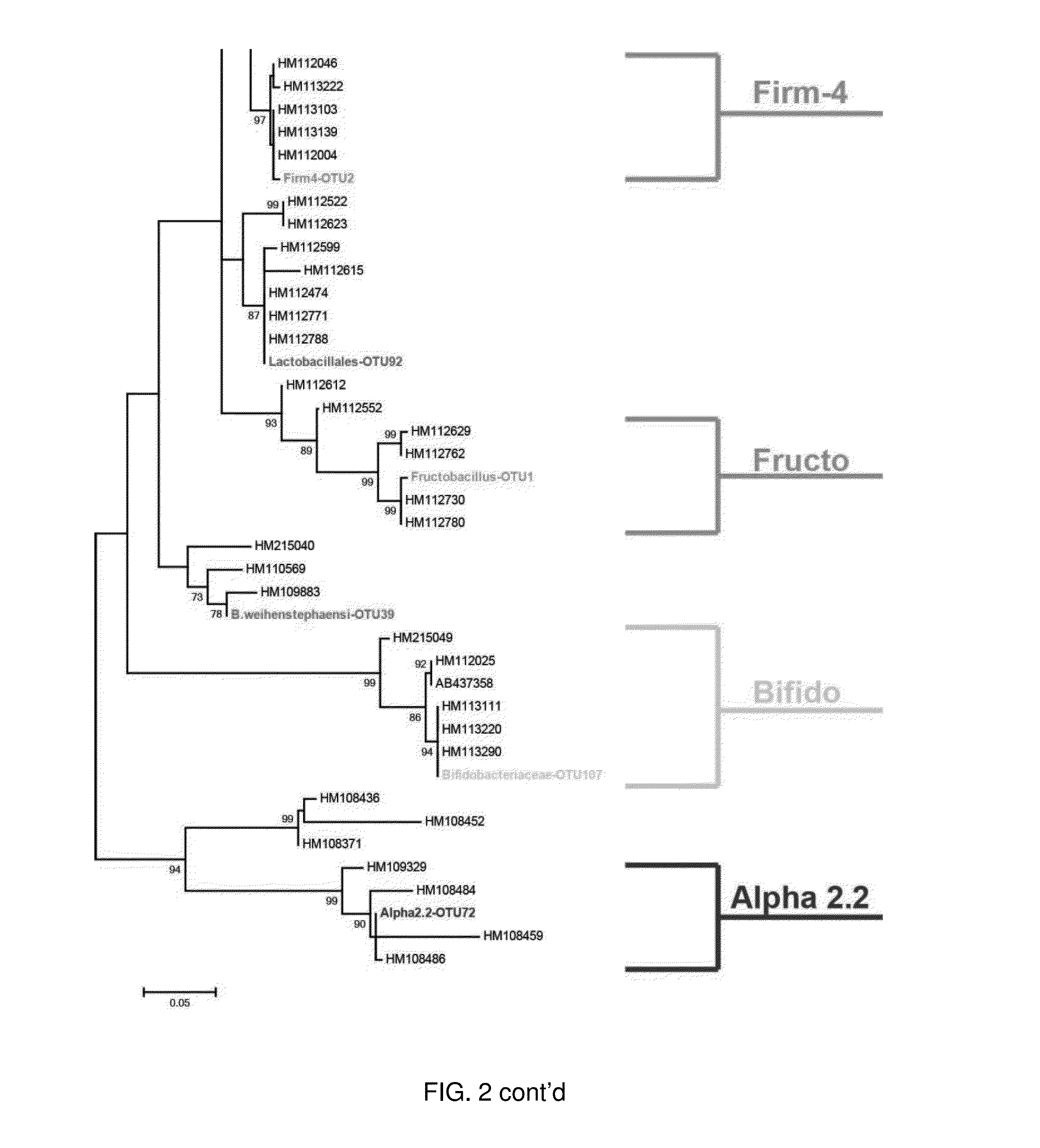Fructobacillus as a probiotic for honeybees
- Summary
- Abstract
- Description
- Claims
- Application Information
AI Technical Summary
Benefits of technology
Problems solved by technology
Method used
Image
Examples
examples
[0039]The materials, methods, and embodiments described herein are further defined in the following Examples. Certain embodiments of the present invention are defined in the Examples herein. It should be understood that these Examples, while indicating certain embodiments of the invention, are given by way of illustration only. From the discussion herein and these Examples, one skilled in the art can ascertain the essential characteristics of this invention and without departing from the spirit and scope thereof, can make various changes and modifications of the invention to adapt it to various usages and conditions.
example i
Methods
[0040]Bee Sampling and Microbiological Protocols.
[0041]Samples were obtained from three healthy, established hives located in Bloomington, Ind. All sampling was performed aseptically. Sterilized collection equipment and cryogenic vials were used and gloves worn throughout. Young worker bees, associated with brood cells and observed actively feeding a larva, were identified as nurse bees and collected, along with the associated larva. A sterile swab was used to sample the brood cell contents previously inhabited by the larva. Additionally, a sample of pollen, found in the nearby comb, was taken from each hive. For two hives, nectar was sampled by pipetting 100 μL of volume out of cells and into a sterile cryogenic vial. Nectar was identified for sampling as fresh honey, regurgitated by forager bees but not yet desiccated or capped for maturation. Each of these five samples (Nurse, Larvae, Cell, Pollen, and Nectar) were collected from the same frame within each individual hive....
example ii
LAB Community Profiles Across Environments
[0058]Lactic acid bacteria associated with the honey bee was chosen as a representative community, through which potential trends in microbial transmission between honey bee-associated environments could be examined Processing of 2,040,169 total sequences resulted in 1,519,195 unique sequences, grouped into 4,005 individual Operational Taxonomic Units (OTUs) when binned at 99% sequence identity. The rationale behind using a 99% identity threshold was to reach strain level resolution when examining each environment. This facilitated the ability to determine if specific microbes were being transferred between environments, or if the appearance of the same taxa in two locations was merely an artifact of homology. An abundance threshold of 1% of total sequence abundance was applied to the data set, yielding ten OTUs that met the criteria. These ten OTUs dominated the data set, containing 89.7% of total sequence abundance. The other 10.3% of OTUs...
PUM
 Login to View More
Login to View More Abstract
Description
Claims
Application Information
 Login to View More
Login to View More - R&D
- Intellectual Property
- Life Sciences
- Materials
- Tech Scout
- Unparalleled Data Quality
- Higher Quality Content
- 60% Fewer Hallucinations
Browse by: Latest US Patents, China's latest patents, Technical Efficacy Thesaurus, Application Domain, Technology Topic, Popular Technical Reports.
© 2025 PatSnap. All rights reserved.Legal|Privacy policy|Modern Slavery Act Transparency Statement|Sitemap|About US| Contact US: help@patsnap.com



